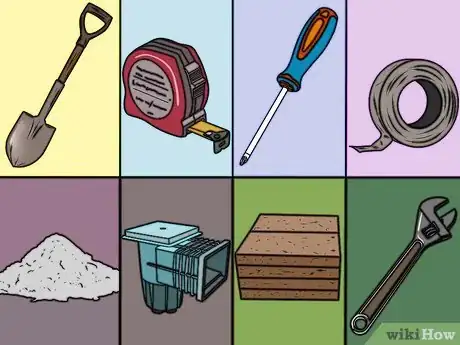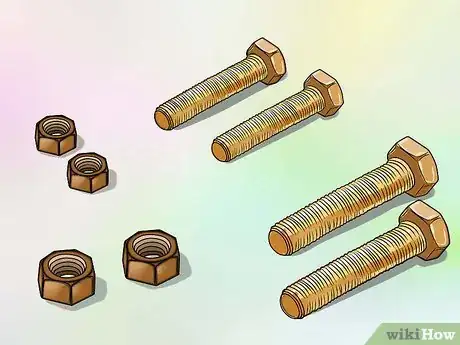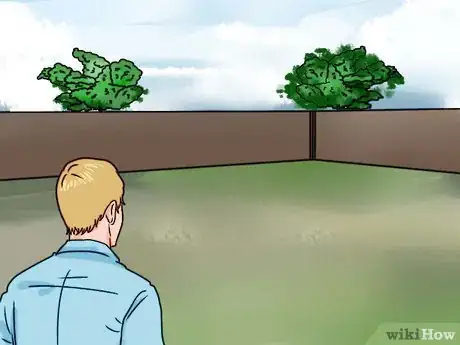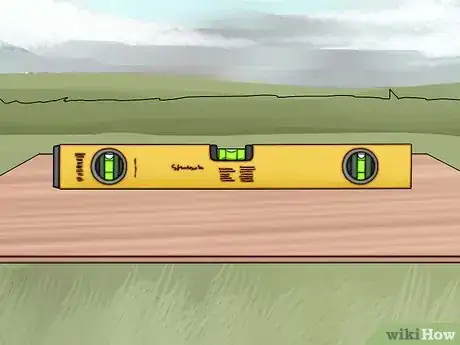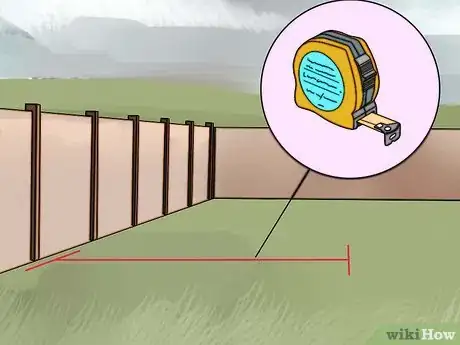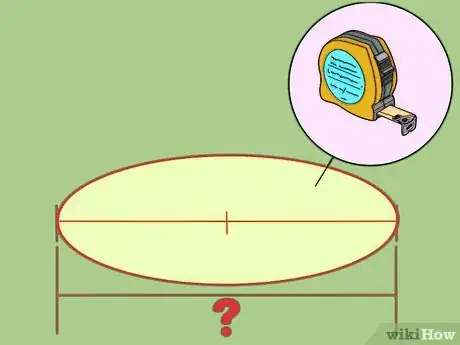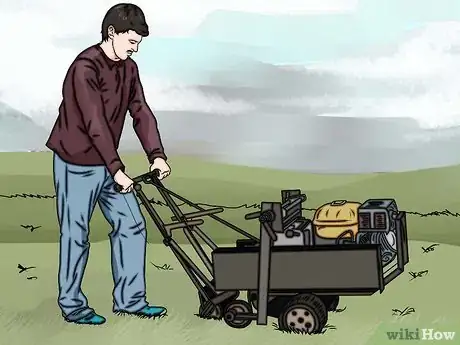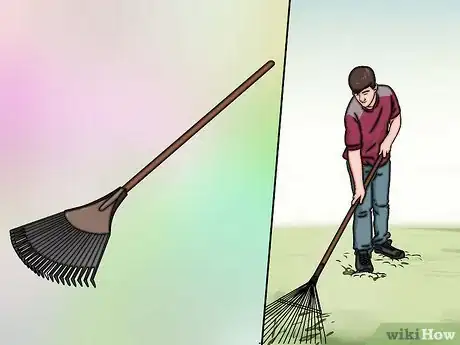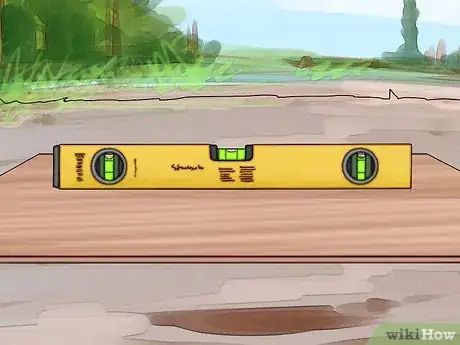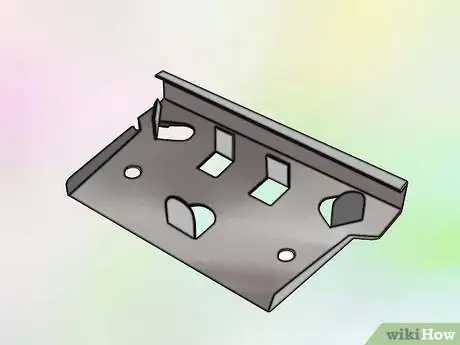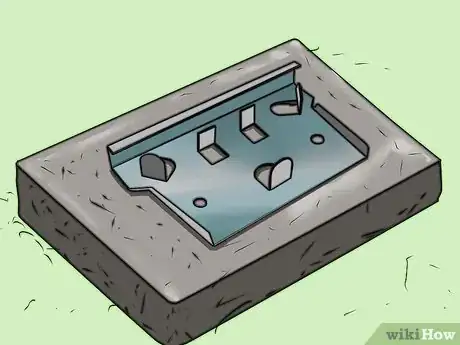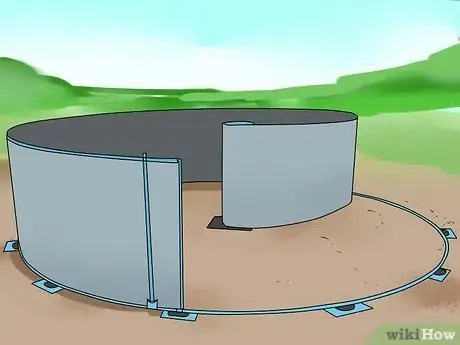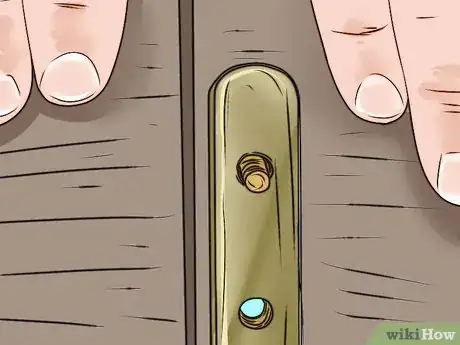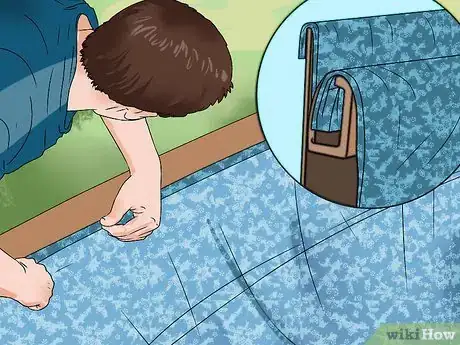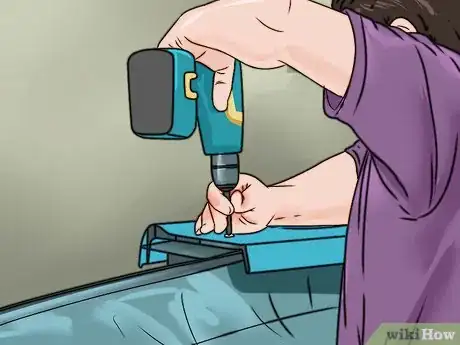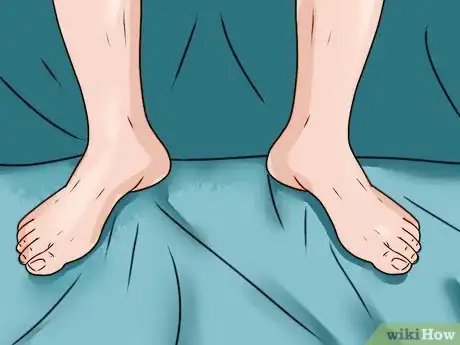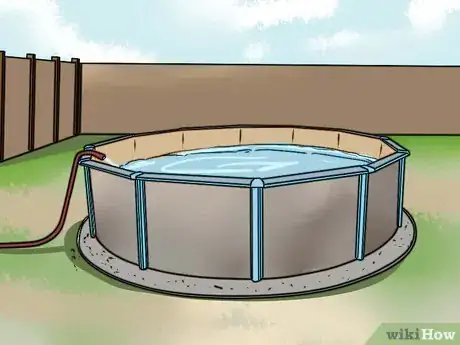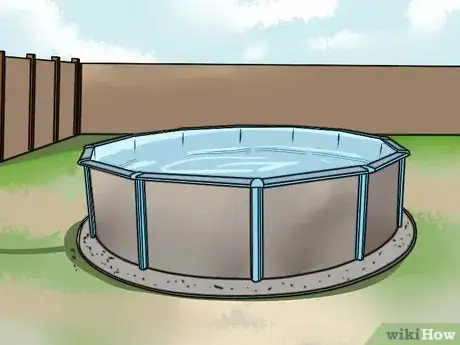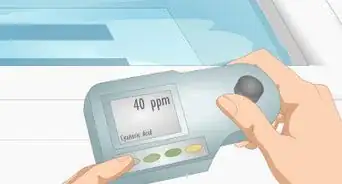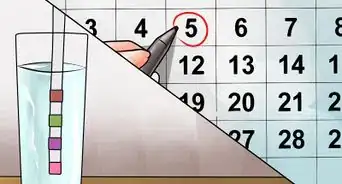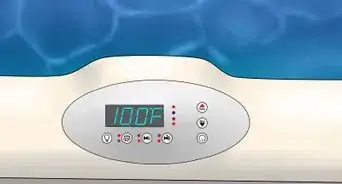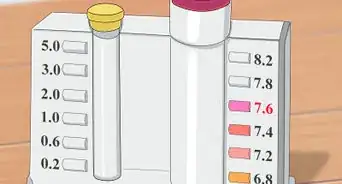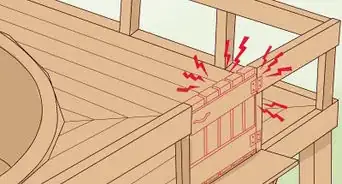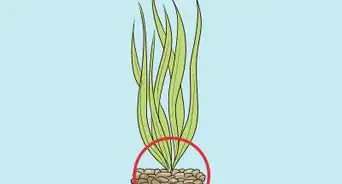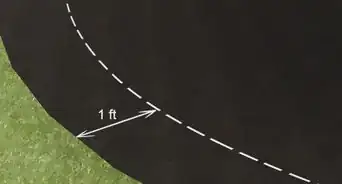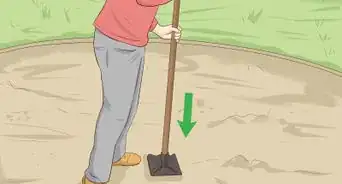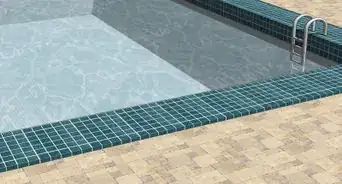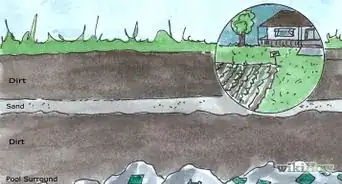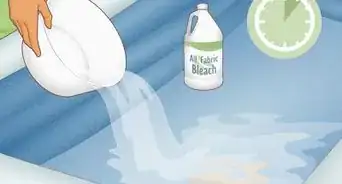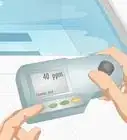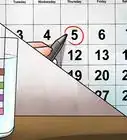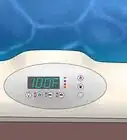This article was co-authored by Oz Tzalalihin. Oz Tzalalihin is a Project Manager for Vitoli Builders, based in Calabasas, California. He has a passion for working with sloped terrains and has shared his expertise through contributions to local publications. Oz holds a PMP (Project Management Professional) degree from Cornell University and specializes in building pools and structures on hillside properties. With his education and experience, he is a valuable asset to Vitoli Builders and is dedicated to delivering quality results and smooth construction.
wikiHow marks an article as reader-approved once it receives enough positive feedback. In this case, several readers have written to tell us that this article was helpful to them, earning it our reader-approved status.
This article has been viewed 506,489 times.
There are many above ground pools on the market today that offer hours of family fun and good exercise when the weather is just too hot for other activities. How to put an above ground pool in depends on the type and quality you chose. Installation can be quick and easy and cost-efficient if you’re prepared beforehand. [1]
Steps
Gathering Your Tools
-
1Find what you need. Before you start to build your pool, make sure you’re equipped with all of the tools you’ll need. Many of the tools you’ll use can be rented from your local equipment rental outlet.
- Shovel
- Tape measure
- Phillips head screwdriver
- Duct tape
- Sand
- Filter
- Skimmer
- Patio blocks (2” x 8” x 16”)
- Wrench (5/16 and ¼)
- Level
- Rake
-
2Open the hardware packets. Go through and separate the hardware so that it is easier to find what you need when you need it. Be sure not to mix the different sized nuts or screws together. This will make it exponentially difficult to find the correct hardware while you’re building.Advertisement
-
3Choose the area. Determine what spot you want to use to put your above ground pool. Remember that you should place your pool 8-10 feet from any trees.
- Avoid steep slopes.
- Avoid underground obstruction such as tree roots.
- Must comply with all state and local codes.
Preparing the Area
-
1Ensure the ground is level. This can be done a couple different ways, and it is very important to the structure of your pool.
- Rent a transit to find a level area. Can be rented at most local equipment rental outlets.
- Use a long, straight board with a carpenters level on top of it to measure the levelness of the area.
-
2Find the center point. This is where the middle of you pool will be. It is easiest to measure off an existing object. A fence or swing set work as your existing object.
- Measure from the existing object and mark where you want the edge of your pool.
- Using the tape measure, measure half of the width (the radius) of the pool from the marked edge. This is your center point.
- Stake the tape measure at the center point of the pool.
-
3Measure the outline of your pool. This measurement won’t be exactly the wall of your pool, but it gives you a guideline for building.
- Pull the tape measure to the radius measure of your pool plus one foot.
- Mark this on the ground all the way around your center point.
-
4Remove the sod. Your pool cannot be installed on top of any grass. If you put it on grass, the bottom will be unstable and can shift or settle over time.
- A sod remover can be rented from your equipment rental shop and make this part of the job much easier.
-
5Rake the area. Once you’ve dug up your sod, rake over the area to clean it.
- This will remove the remaining sod.
- Also the roots, rocks, or other debris that can be bad for your liner will be picked up by the rake.
-
6Double check to make sure the area is level. Once again, this is important to the base structure of your pool.
- Dig down any high areas, rather than building up low areas. This will prevent the pool from settling over time.
- Your entire area should be within 1 inch of being perfectly level.
Constructing the Pool
-
1Building your bottom ring. Use your plates, stabilizers, and rails to create your bottom ring. There are multiple types of plates, [2]
- Bottom plate. Your bottom plates will either be metal plates, resin plates, or resin bottom cuffs.
- Bottom stabilizer will be crimped on one side. They are the smaller rails.
- Bottom rail will always be straight and larger than your stabilizer.
- Lay these out along the site.
- Slide the bottom rail into the bottom plate up to the dimple on the plate.
- Measure the bottom track across in several locations to ensure that the pool is truly round and the correct size. If the size is correct, stake the ring into position.
-
2Support your base. Once your ring is in place, add support for the base of your pool. This will help keep your pool stabilized and level for years. [3]
- Level each of the plates. All of your parts should be within ½ inch of each other.
- Place a patio block under each one of your bottom plates. The block should be placed into the ground so that the track is still sitting flush on the ground. Be sure the block is level in all directions.
- Remove one bottom rail to bring in the sand. Mark the two connecting bottom plates so that you place it back in the correct spot after bringing in the sand.
- Dump the sand in your pool area. You will need between 1 yard and 6 yards of sand depending on the size of your pool.
- Replace your bottom rail and spread the sand evenly across the pool area.
-
3Install your pool wall. Now that you have a level bottom for your pool, install the wall around the area. This is done easily using the tracks on your bottom plates. [4]
- Make sure the skimmer cutout is on the top portion of the wall.
- Use landscaping stakes around the pool area to hold the wall during instillation.
- Place the wall into the track at the center of a bottom plate, and continue around the ring.
- If the wall doesn’t properly line up at the end, you can adjust your bottom rails in or out of the bottom plates to ensure fit. This should be done evenly around the pool.
-
4Put the wall together. After installing the proper support, begin putting your pool wall together.
- Single row wall bars will have rivets pre-attached. Secure these using nuts and bolts. Use your hand screwdriver to put a fill each spot for nuts and bolts. If you don’t use a nut in every hole, your pool may break.
- Staggered wall bar systems don’t come with pre-attached wall bars. Line up your parts and place one wall bar on the inside of the pool and one on the outside of the pool. Connect them using your nuts and bolts.
- Wall bars must not touch each other.
- Cover bolt heads with three layers of duct tape. This will protect your liner from getting holes.
- Build a 6-8 inch cove along the inside of the pool wall.
- Install the upright onto the bottom plates. Note that the top can be determined by an extra hole on the center.
- Pack your cove. Be careful not to scratch the pool wall when you’re doing this. You can use a tamp or trowel.
-
5Install the liner. Be careful when doing this, you don’t want any tears to form in your liner. Lay the liner in the sun for a few minutes. This will make it easier for you to lay out.
- Wet the sand and tamp the entire pool area and then rake it. This will ensure a level base for your pool.
- Bring the liner into your pool and lay it out.
- Do not step on the liner with your shoes on. Install it either barefoot or in socks.
- Snap Bead liners will snap into a separate track around the pool. This track is installed on top of your pool wall.
- V-Bead liners require no coping. The stabilizer rails will hold this liner in.
- Unibead liners can be used as either a Snap Bead or a V-Bead liner. It comes as a V-Bead but you can remove the top portion to make it a Snap Bead liner.
- Overlap liners are hung over the pool wall. These are securing using plastic coping strips.
- Work all the wrinkles to the outside of the pool.
- Install stabilizer rails along the top of the pool wall. Once these rails are installed, you can take down the landscaping stakes.
-
6Installing top plates, top rails, and top covers. These pieces all fit easily into one another when done correctly. Remember to constantly check to ensure the sides and top are level. This is the last step in building your pool. [5]
- Place the top plates onto the uprights. Make sure they are perfectly straight using a level. Tighten them with proper screws.
- Install the top rails. Place them around the pool and tighten the screws once all of the rails are in place.
- Tighten top covers onto your uprights.
Filling the Pool
-
1Work out the wrinkles. During the first inch of filling, you can continue walking around the liner and working the wrinkles to the outside of the pool. This will be the last chance you have to create a straight surface for your pool floor. [6]
- If you’re walking around on the liner, make sure you aren’t wearing shoes (even water shoes or flip flops) and that you haven’t tracked any rocks into the pool with you.
-
2Fill the pool half way. Sit back and slowly fill the pool. Once your pool is filled half way, check your skimmer and filter instructions on how to install them.
-
3Finish and enjoy. You’re almost done! Apply the finishing touches, and fill the pool the rest of the way.
- Install the safety warnings. If you don’t have them, get in touch with your manufacturer and they will provide you new warnings for free.
- Your warranty will be voided if you don’t add your labels.
- The bigger label is for the outside of your pool directly next to the entryway.
- Smaller label is attached on the liner, above the water line, and directly across from the pool’s entryway.
- Fill the pool. Your water level should be 1/3 and ½ way up the skimmer. [7]
- You can use technology to create beautiful lighting with LED low voltage in many sizes without damaging your pool.
- The new way to do it is LED lighting on the return pipe. All you have to do is to pull it out and knock it back in.
- Some new lighting features with spillways are integrated into the light so you can have 24 inches, 28 inches, 30 inches, or 36 inches of light.
Community Q&A
-
QuestionCan a pool be leveled after being filled?
 Community AnswerNo. Getting the site level is one of the most important things you need to do prior to erecting the pool.
Community AnswerNo. Getting the site level is one of the most important things you need to do prior to erecting the pool. -
QuestionHow do I reinsert a portion of the outer side wall that has slipped off the bottom rail?
 Dennis CookCommunity AnswerFrom the outside, dig out around where it has slipped out. Use tour fingers to locate it and lift up on the bottom rails as you place it back in. Pack sand or dirt under the rail to insure it will not settle again. Back fill it back up and feel around on the inside to fix any displaced sand under the liner from the correction and your fingers.
Dennis CookCommunity AnswerFrom the outside, dig out around where it has slipped out. Use tour fingers to locate it and lift up on the bottom rails as you place it back in. Pack sand or dirt under the rail to insure it will not settle again. Back fill it back up and feel around on the inside to fix any displaced sand under the liner from the correction and your fingers. -
QuestionCan I back fill around an above ground pool once it's filled?
 Community AnswerYes. Most pool manufacturers recommend 4 inches up the side.
Community AnswerYes. Most pool manufacturers recommend 4 inches up the side.
Warnings
- If the pool is set up on non-leveled ground, the wall may collapse.⧼thumbs_response⧽
- If you are looking to use a salt system, you cannot use a steel pool.⧼thumbs_response⧽
- Do not ever dive or jump into an above ground pool.⧼thumbs_response⧽
- Some jurisdictions and insurance policy writers require a fence around your pool.⧼thumbs_response⧽
- Above ground pools require supervision just as any other pool. Do not let children play in them unattended.⧼thumbs_response⧽
References
- ↑ http://www.poolsolutions.com/gd/above-ground-pool-problems.html
- ↑ http://www.poolsupplyworld.com/blog/how-to-install-a-round-above-ground-pool/
- ↑ http://www.poolsupplyworld.com/blog/how-to-install-a-round-above-ground-pool/
- ↑ http://www.poolsupplyworld.com/blog/how-to-install-a-round-above-ground-pool/
- ↑ http://www.poolsupplyworld.com/blog/how-to-install-a-round-above-ground-pool/
- ↑ http://www.inyopools.com/HowToPage/how_to_install_above_ground_pools.aspx
- ↑ http://swimming.about.com/od/poolandspamaintenance/a/pool_waterlevel.htm
- ↑ http://www.risingsunpools.com/buyers-guide/aboveground-pool-buyers-guide/
About This Article
Before putting in an above ground pool, prepare the area by ensuring that the ground is level and removing the grass with a sod remover. If you don’t have a sod remover, you can rent one from from your local home improvement store. Then, start constructing your pool, beginning with the bottom ring. Once the ring is in place, place patio blocks underneath and fill the pool area with sand to add support to the base. Afterwards, install the pool wall and liner, and finish by screwing on the top plates, top rails, and top covers. To learn more, including how to fill your finished pool with water, scroll down.
